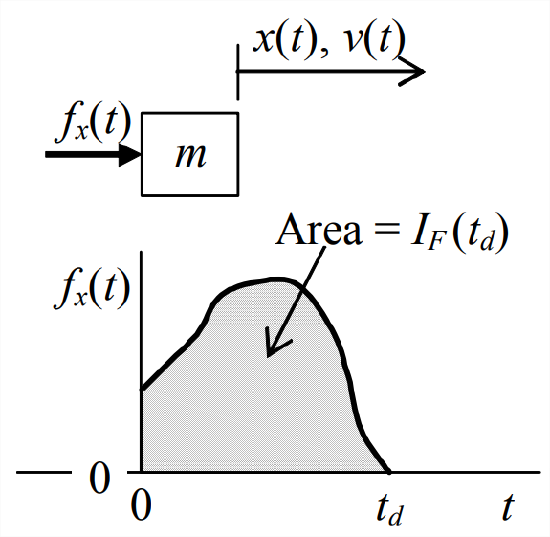8.2: Impulse-Momentum Theorem for a Mass Particle Translating in One Direction
- Page ID
- 7671
An unrestrained mass particle subjected to force acting only in the \(x\) direction is shown in the drawing at right. The equation of motion is

\[m \ddot{x}=f_{x}(t) \Rightarrow m \dot{v}=f_{x}(t) \nonumber \]
Integrating the equation of motion from time zero to any time \(t>0\) gives
\[m \int_{\tau=0}^{\tau=t} \frac{d v}{d \tau} d \tau=m v(t)-m v(0)=\int_{\tau=0}^{\tau=t} f_{x}(\tau) d \tau \equiv I_{F}(t)\label{eqn:8.6} \]
in which \(I_{F}(t)\) is the area under the force time history and is called the impulse of the force, with dimensions of force \(\times\) time. Equation \(\ref{eqn:8.6}), the impulse-momentum theorem for a mass particle, states that the change of momentum equals the impulse. For a pulse, a force of limited duration as in the drawing on the previous page, we are generally interested in the total impulse \(I_{F}\left(t_{d}\right)\), which remains unchanged for \(t>t_{d}\).


